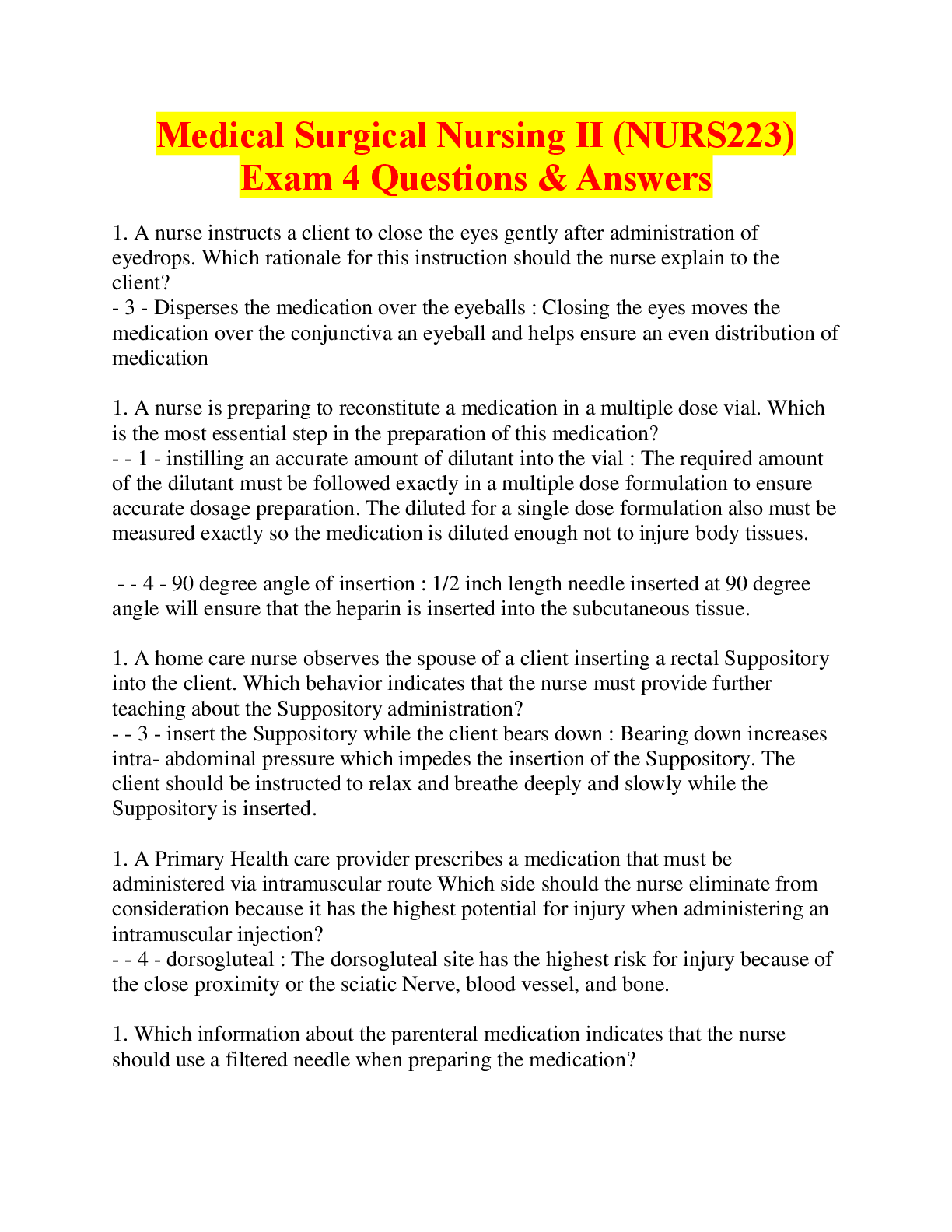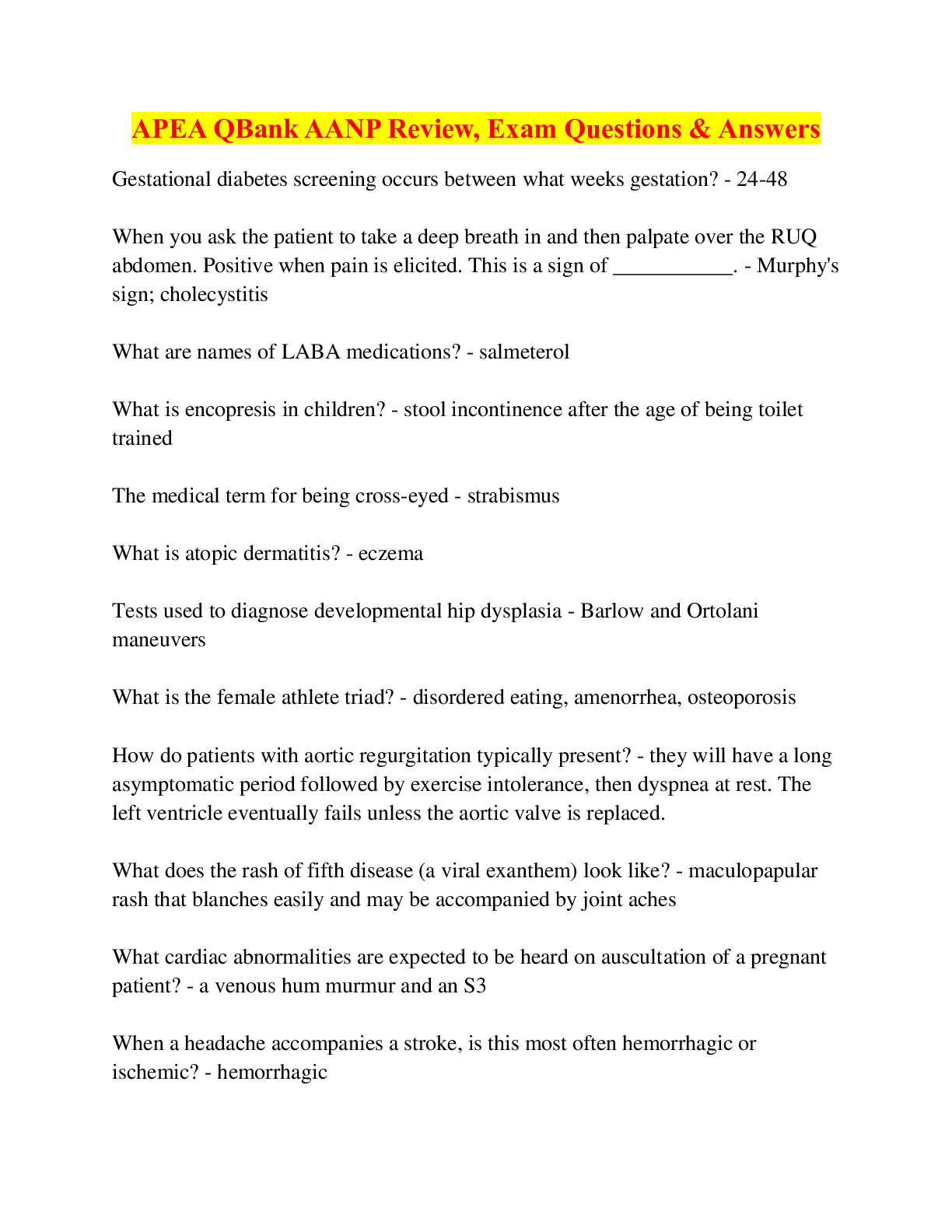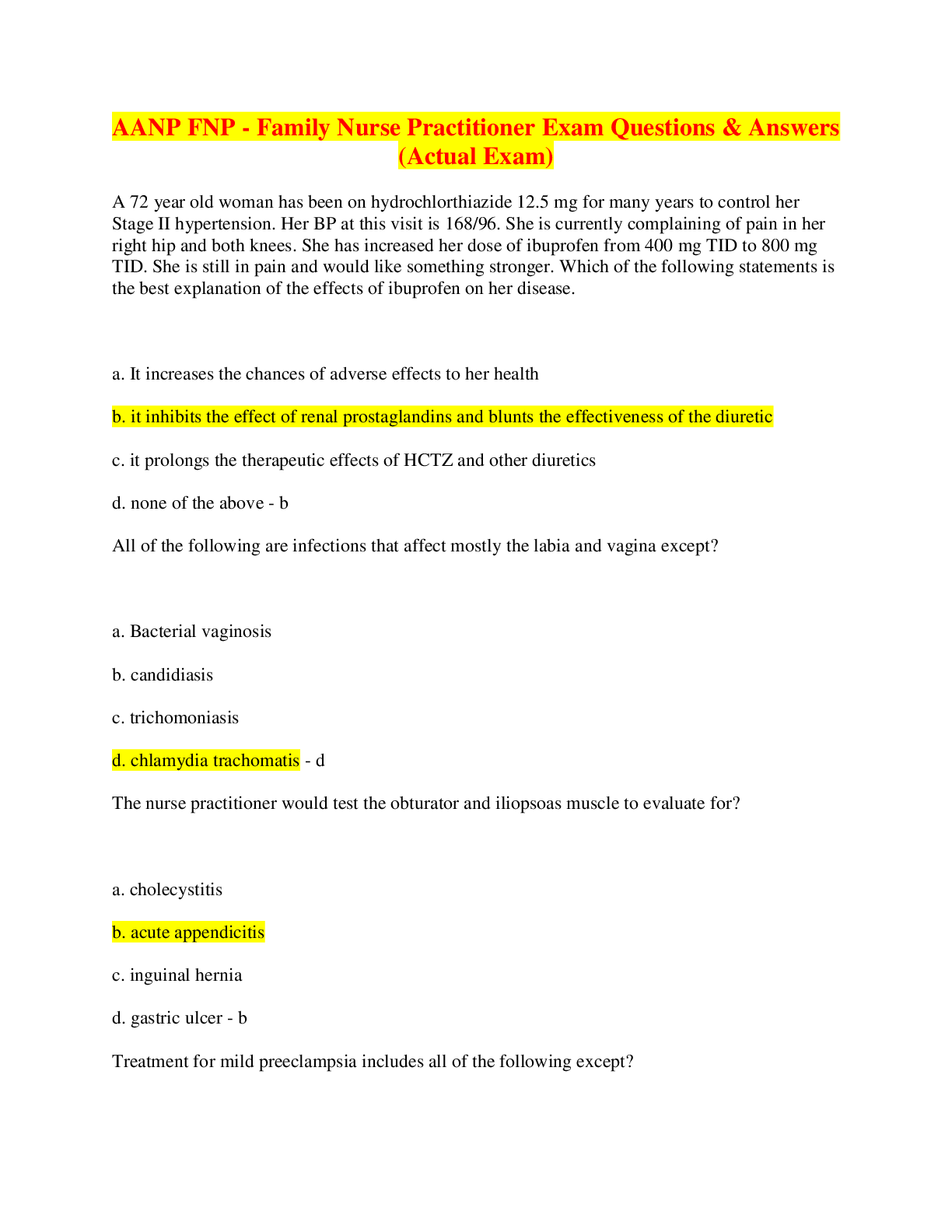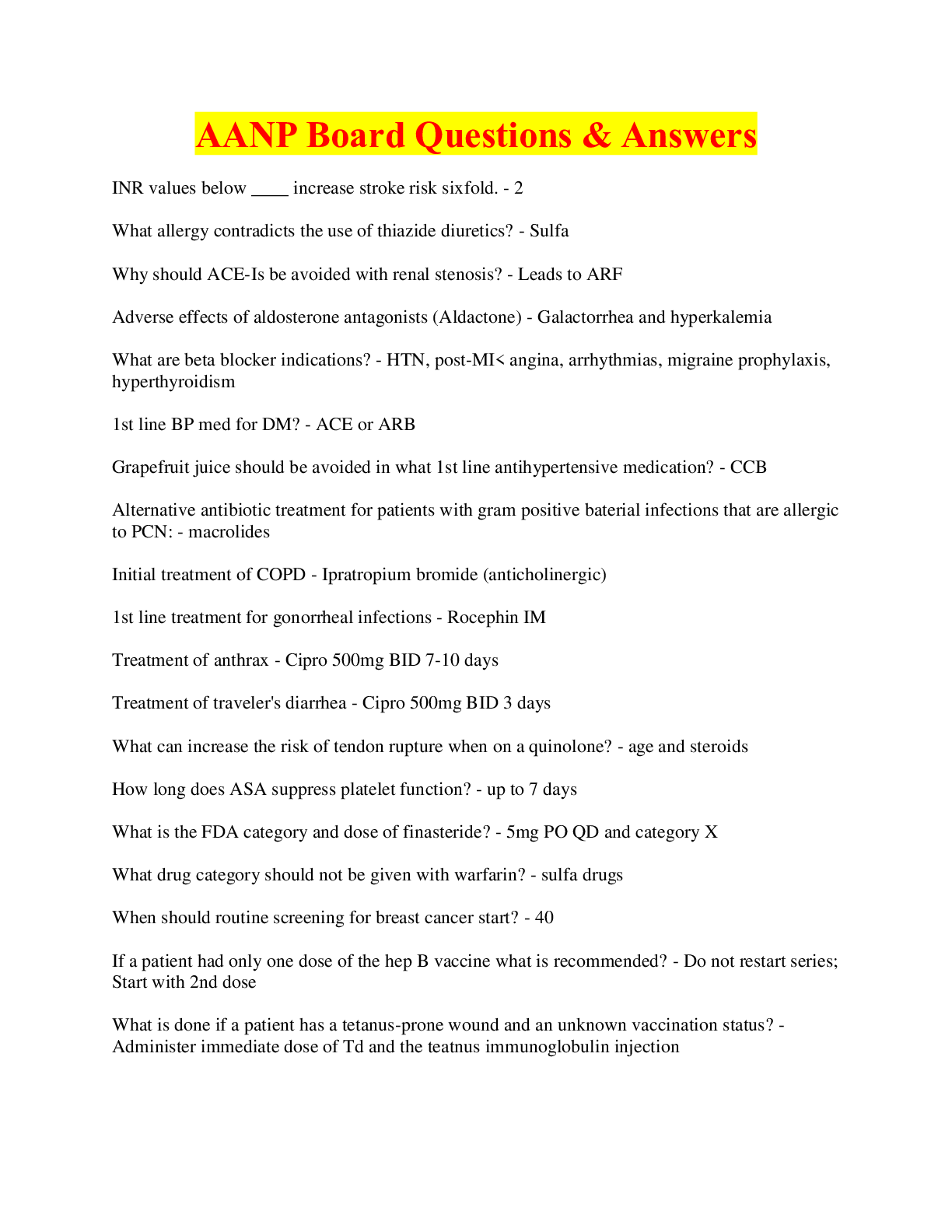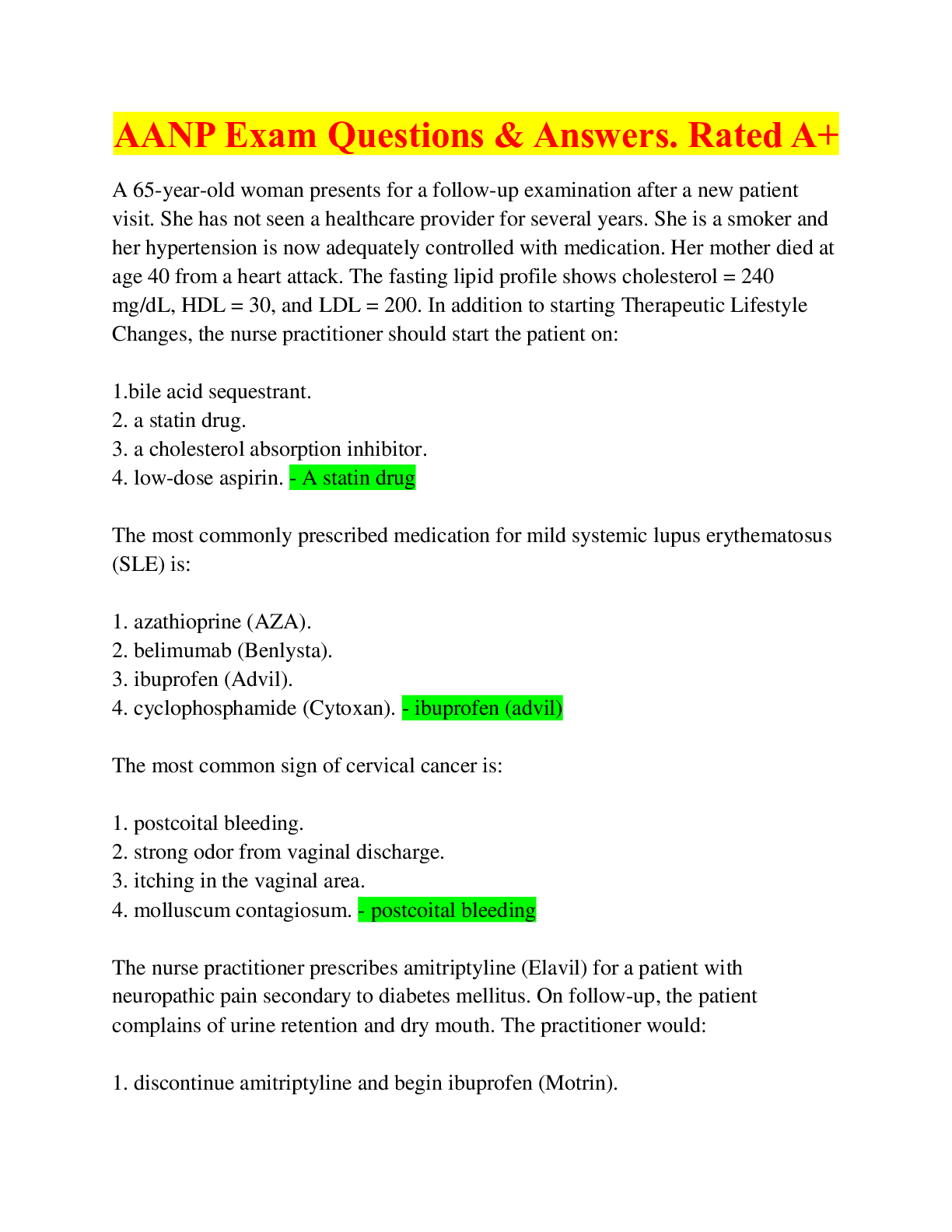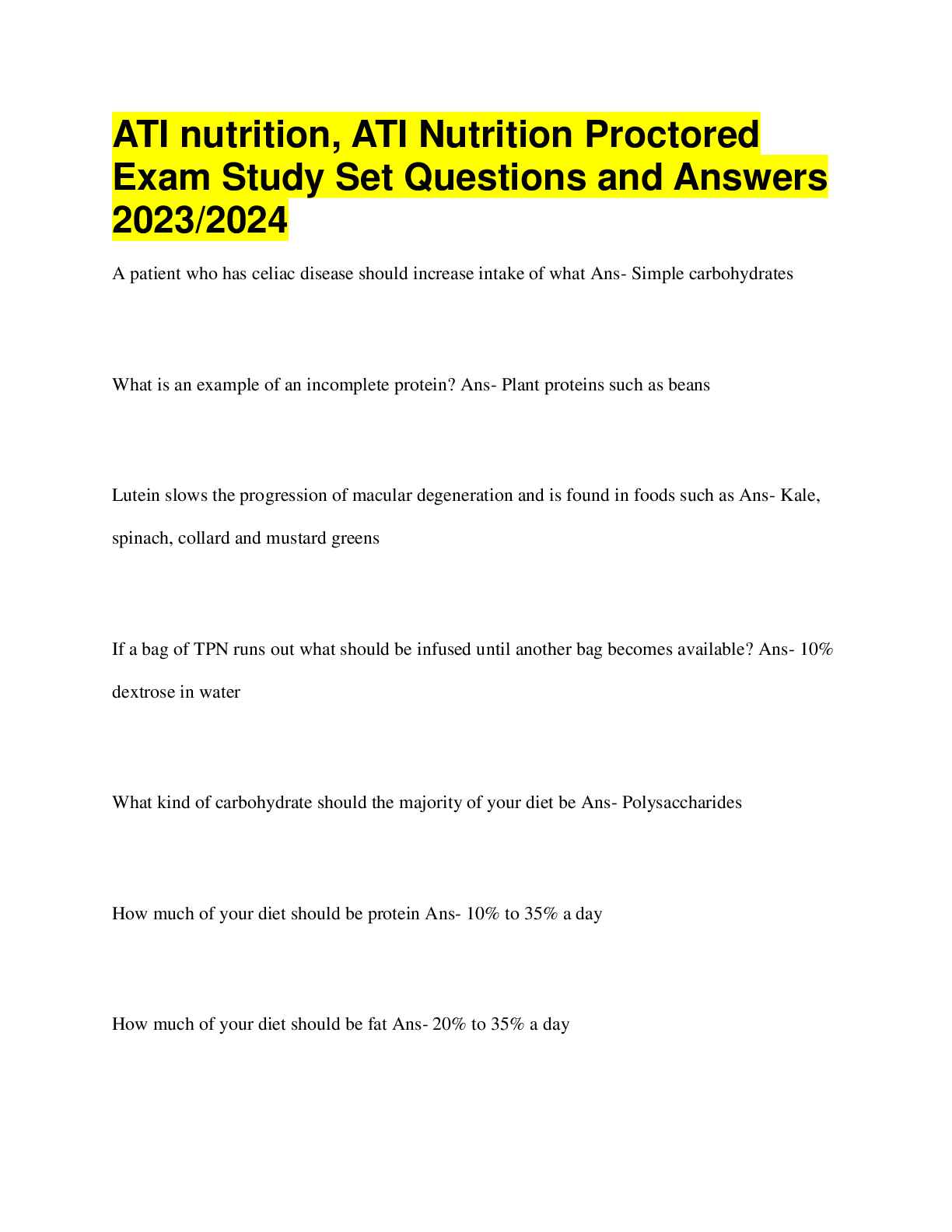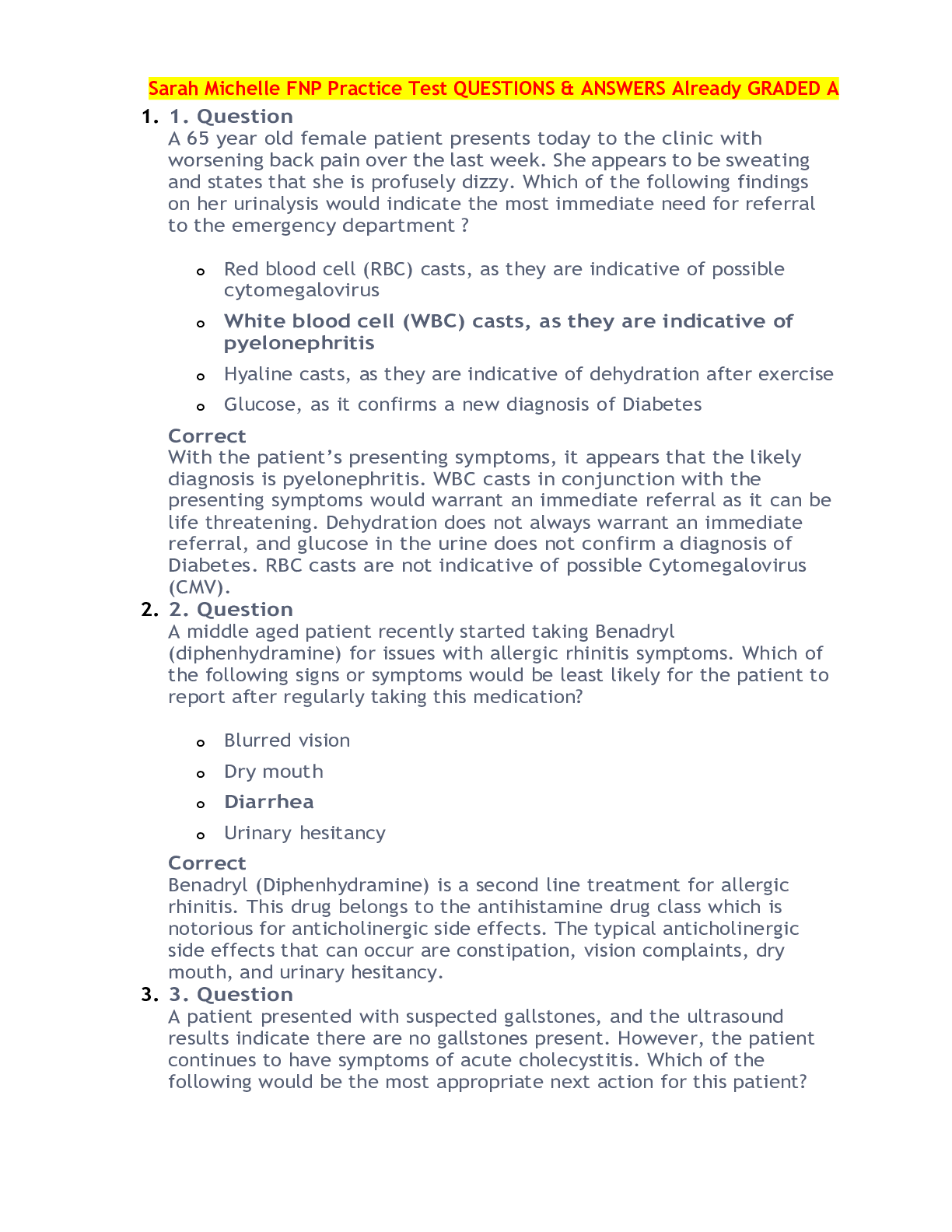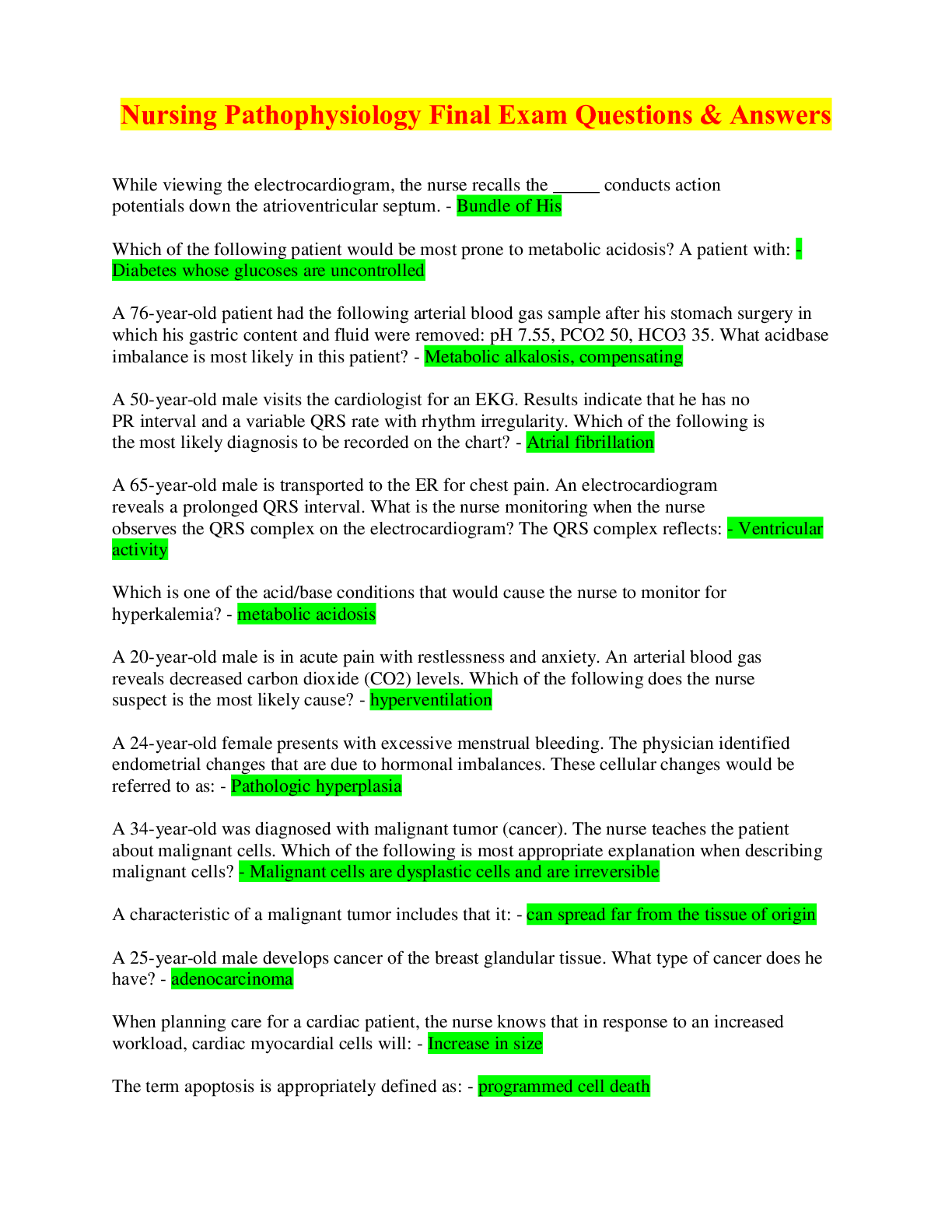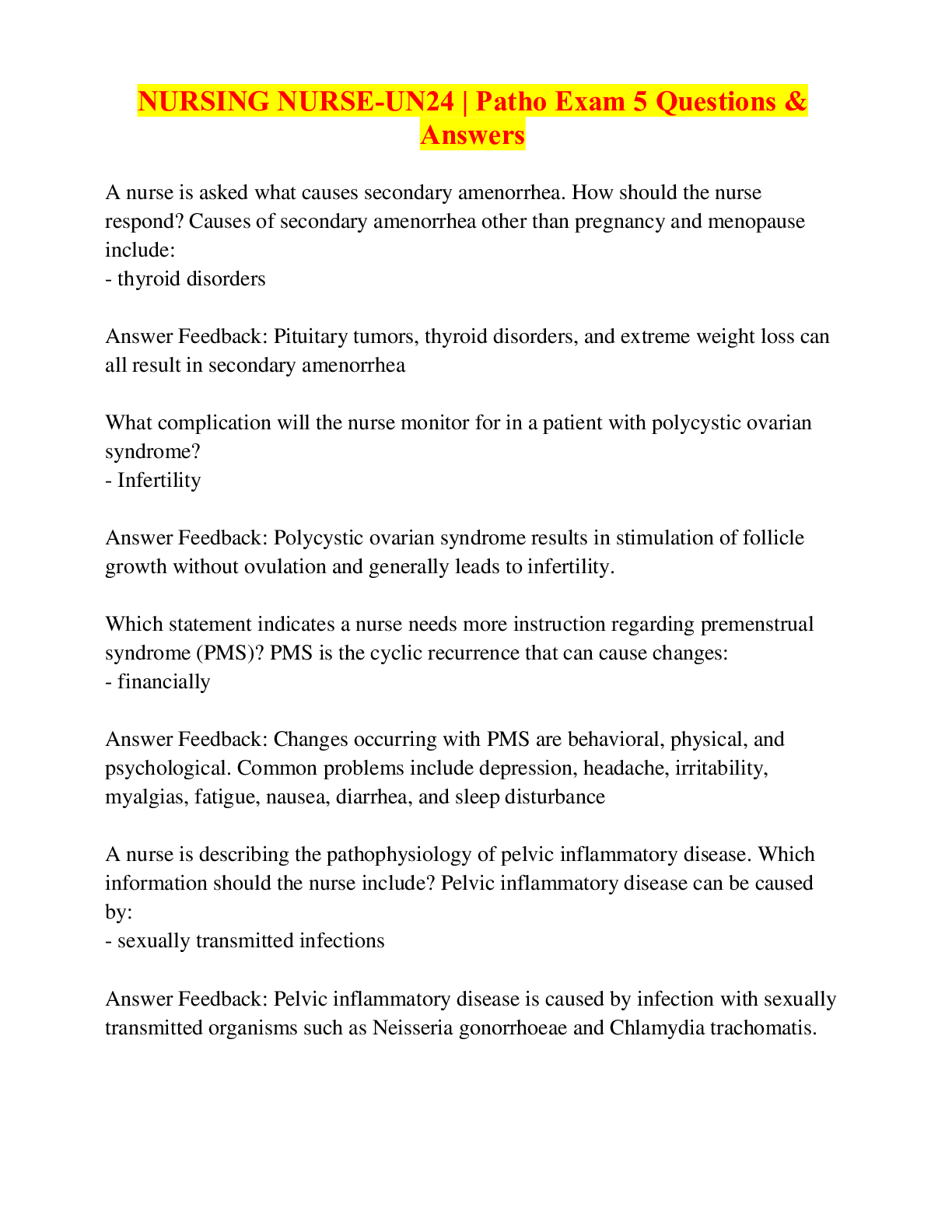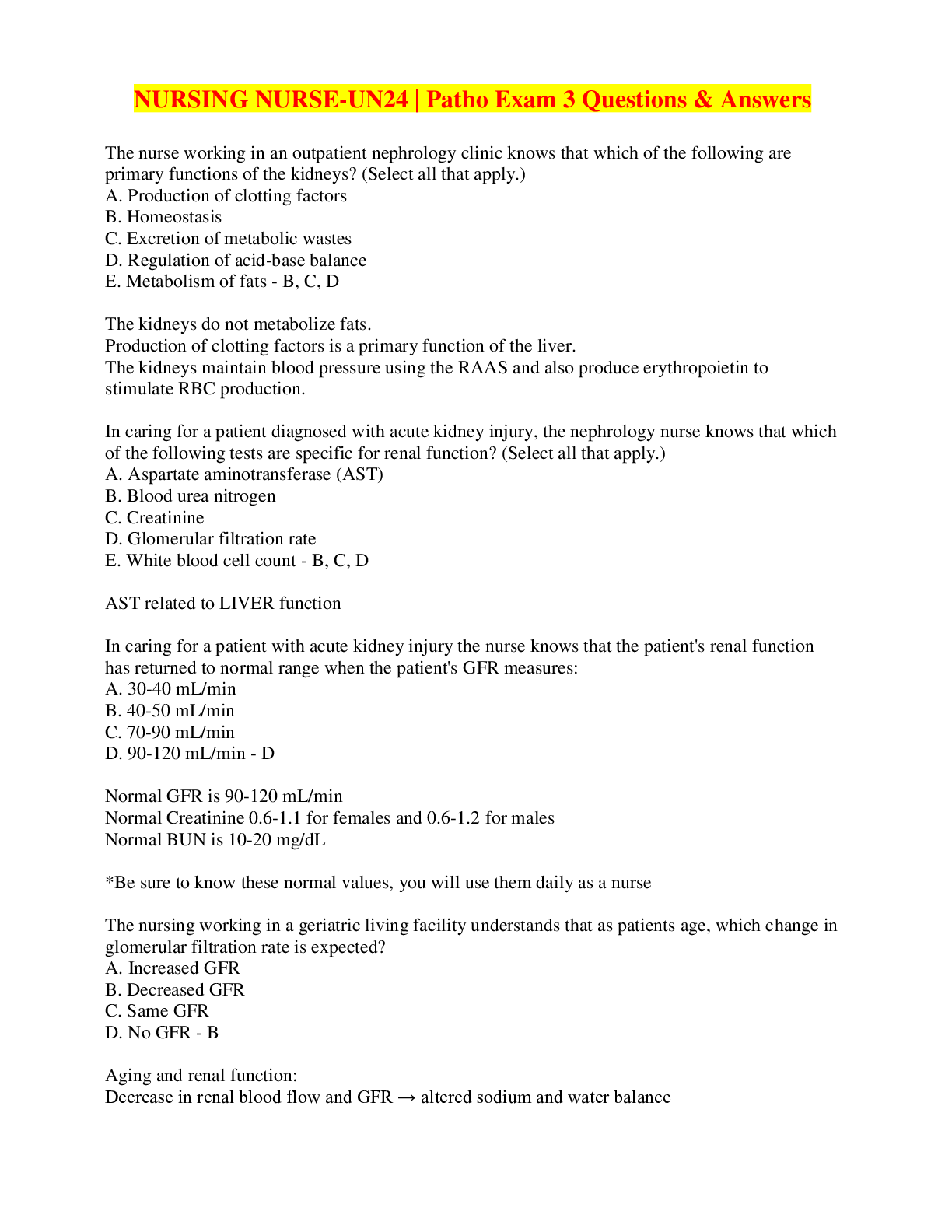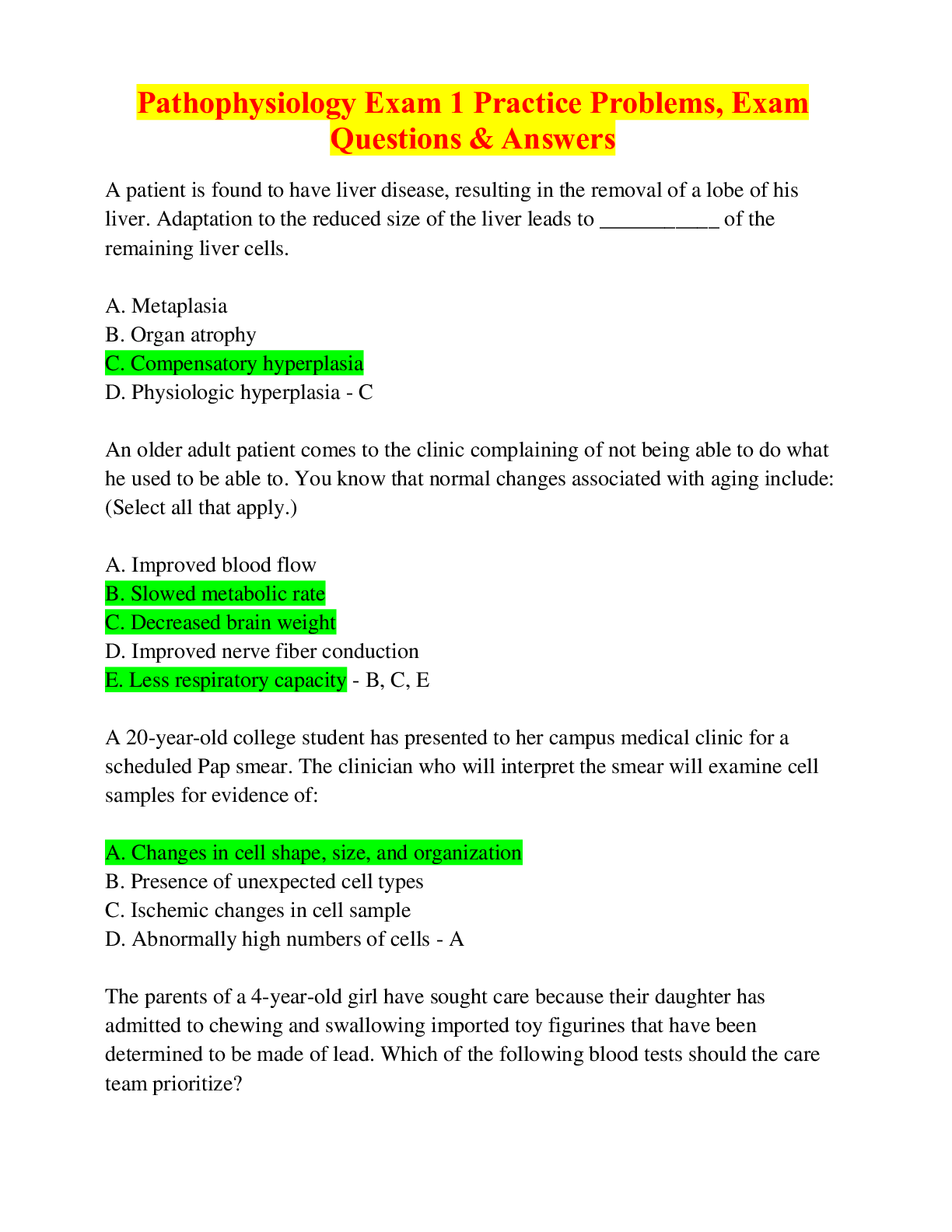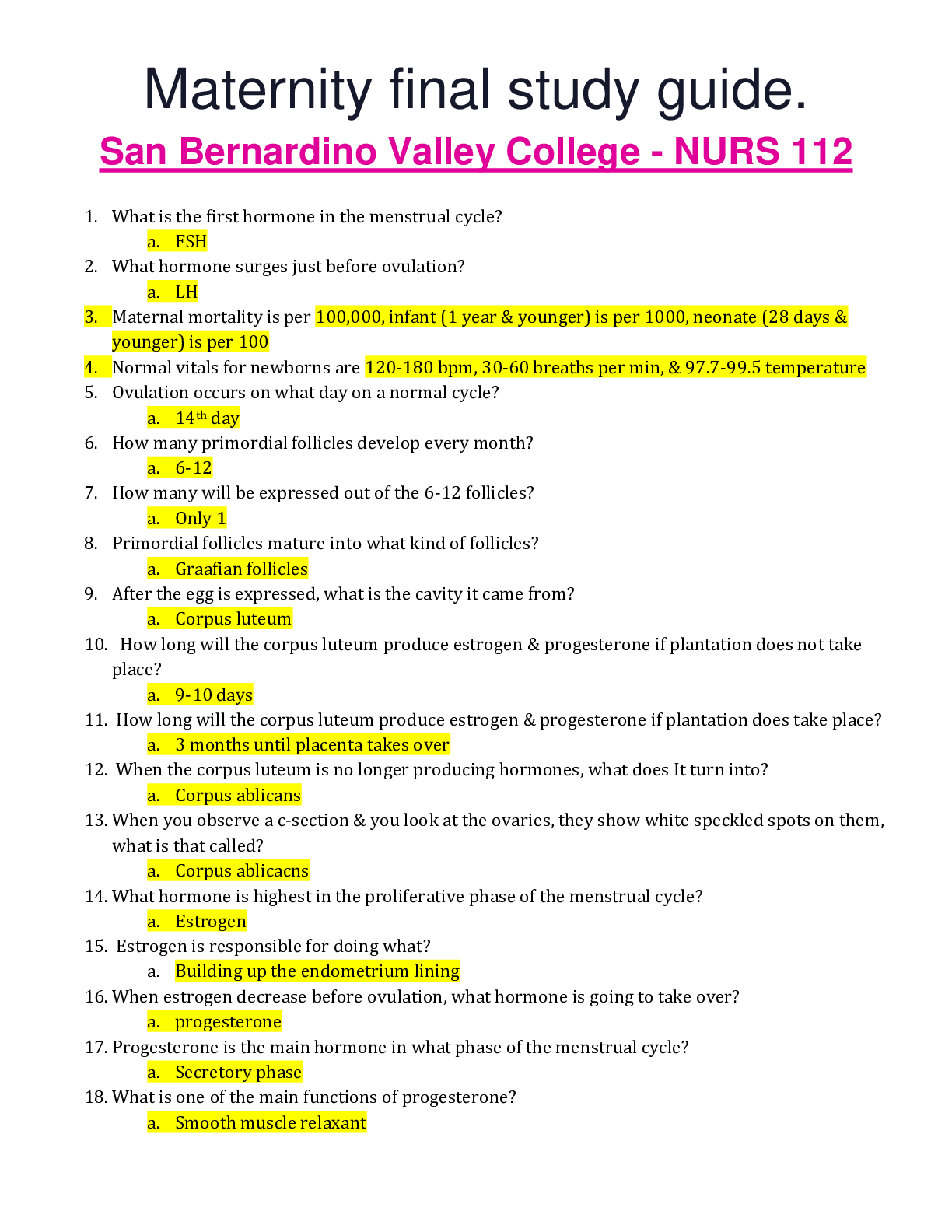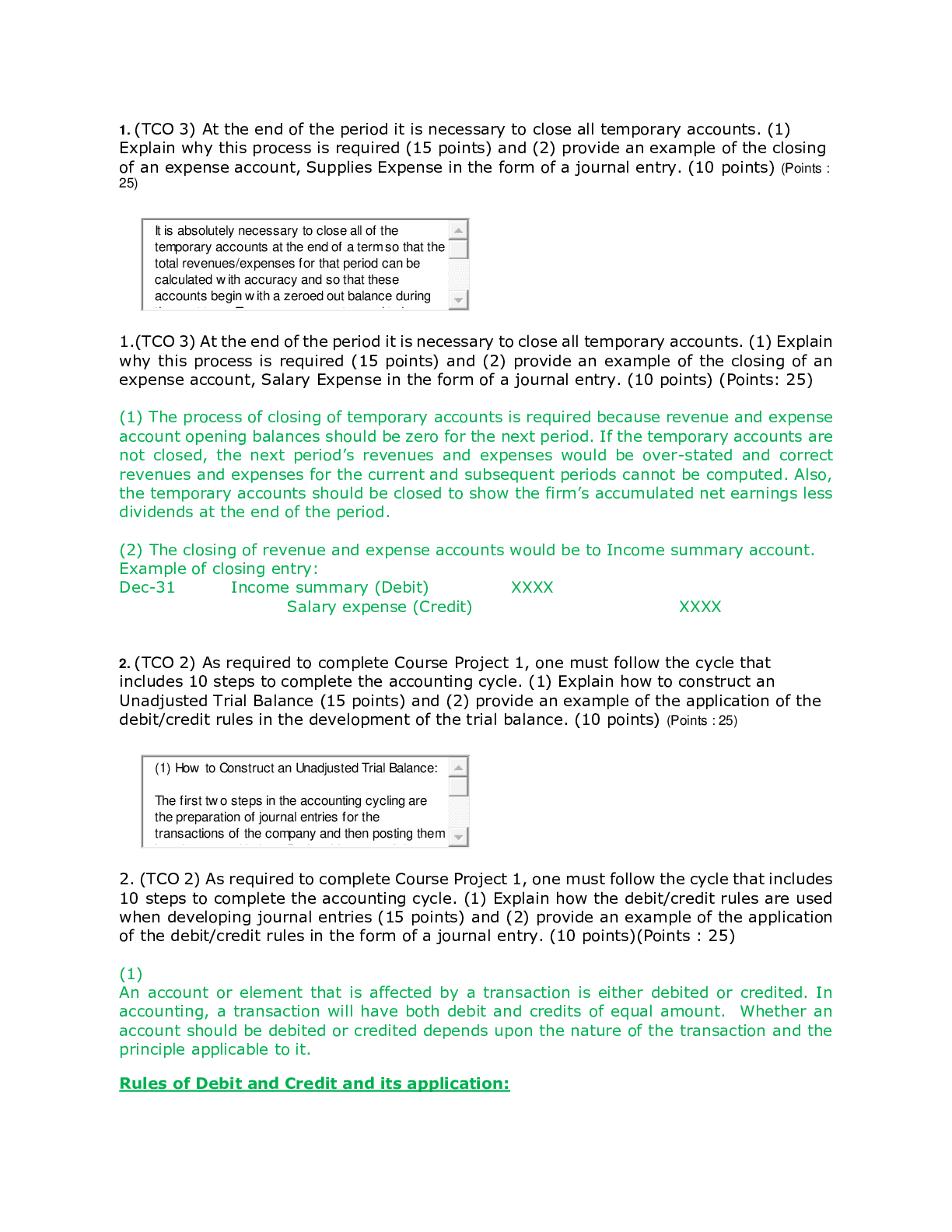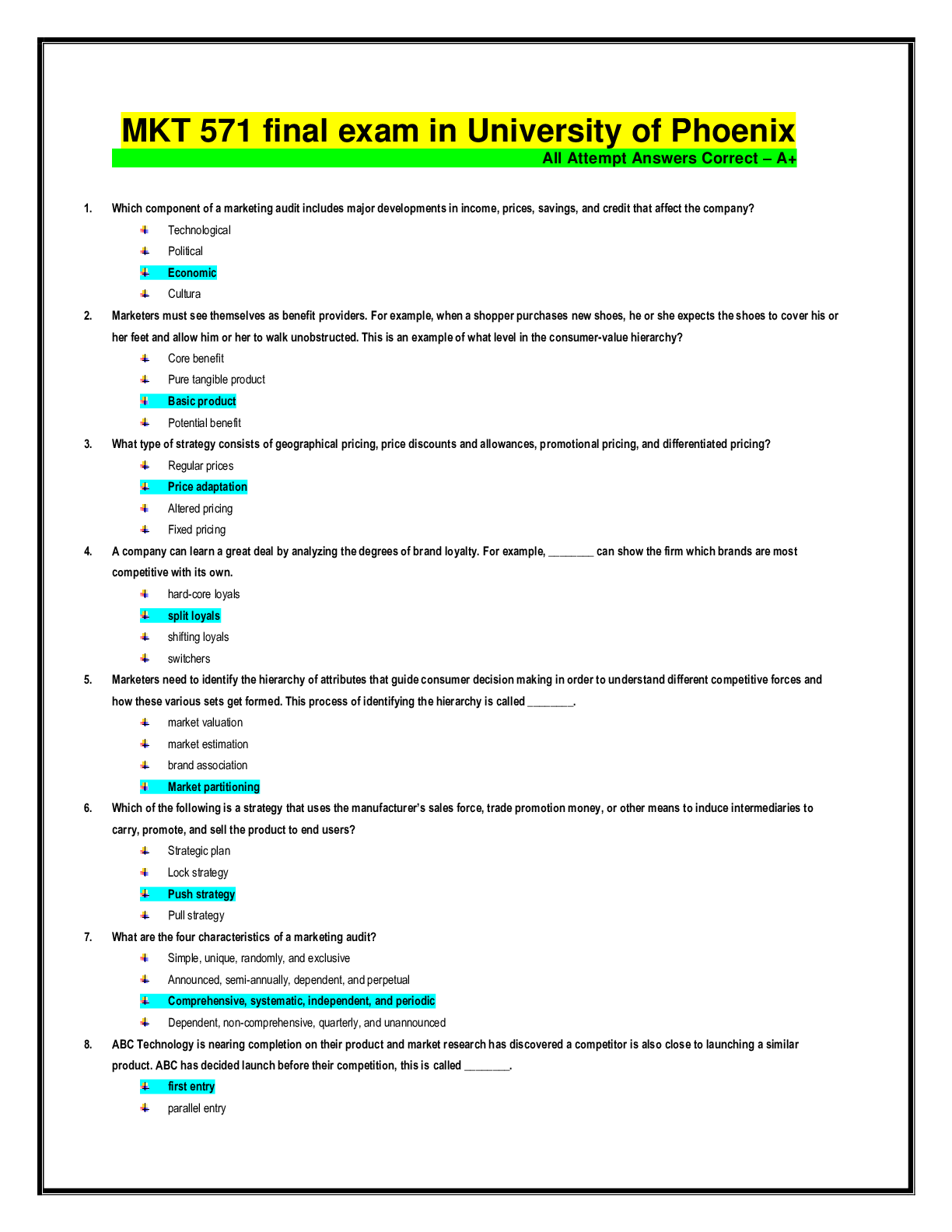Advanced health assessment: NUR 504 Quiz 5, Exam Questions & Answers
Document Content and Description Below
Advanced health assessment: NUR 504 Quiz 5, Exam Questions & Answers-A patient has mild epigastric tenderness, normal bowel sounds, and signs of peritonitis. What do these symptoms suggest? a. Cholec... ystitis b. Peptic ulcer disease c. Pancreatitis d. Cirrhosis - b. Peptic ulcer disease A patient suffers from severe pain that seems to radiate from the abdomen up into her shoulder. Which of the following are possible? a. Cholecystitis or biliary stones b. Appendicitis or intestinal obstruction c. Pancreatitis or perforated duodenal ulcer d Abdominal aneurysm or diverticulitis - c. Pancreatitis or perforated duodenal ulcer A slight deviation of the trachea to the right is considered normal in palpation; under inspection the trachea should be midline and appear symmetrical. - True A sudden onset of fatigue, heart palpitations, a constant state of wakefulness, and weight loss together suggest what ailment? a. Adrenal disease b. Hyperthyroidism c. Diabetes d. Addison's disease - c. Diabetes All parts of the human colon reside in the two lower quadrants of the abdomen - False An excess of thyroid hormones causes an overabundance of proteins within blood vessels. - False Asymmetry of the neck muscles potentially suggests an enlarged thyroid - True Compression of the jugular removes which of the following? a. Only a venous hum b. Only a bruit c. Both a venous hum and a bruit d. None of these answers is correct. - a. Only a venous hum Damage to the temporal lobe of the brain may leave a patient with impaired hearing as well as emotional/behavioral abnormalities - True Describe the posterior approach to palpating the thyroid. - Place the fingers of both of your hands on the patient's neck so that your index fingers are just below the cricoid cartilage. Ask the patient to sip water; as the patient swallows, you should feel the thyroid isthmus rise up under your fingers. Sometimes it is not palpable. Displace the trachea to the right with the fingers of your left hand. With the fingers of your right hand, palpate the right lobe of the thyroid between the trachea and the sternomastoid muscle. Examine the left lobe of the thyroid in the same manner. [Show More]
Last updated: 9 months ago
Preview 4 out of 12 pages

Loading document previews ...
Buy this document to get the full access instantly
Instant Download Access after purchase
Buy NowInstant download
We Accept:

Reviews( 0 )
$11.50
Can't find what you want? Try our AI powered Search
Document information
Connected school, study & course
About the document
Uploaded On
Nov 03, 2024
Number of pages
12
Written in
Additional information
This document has been written for:
Uploaded
Nov 03, 2024
Downloads
0
Views
11

